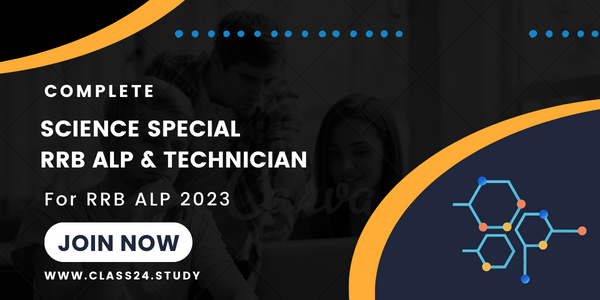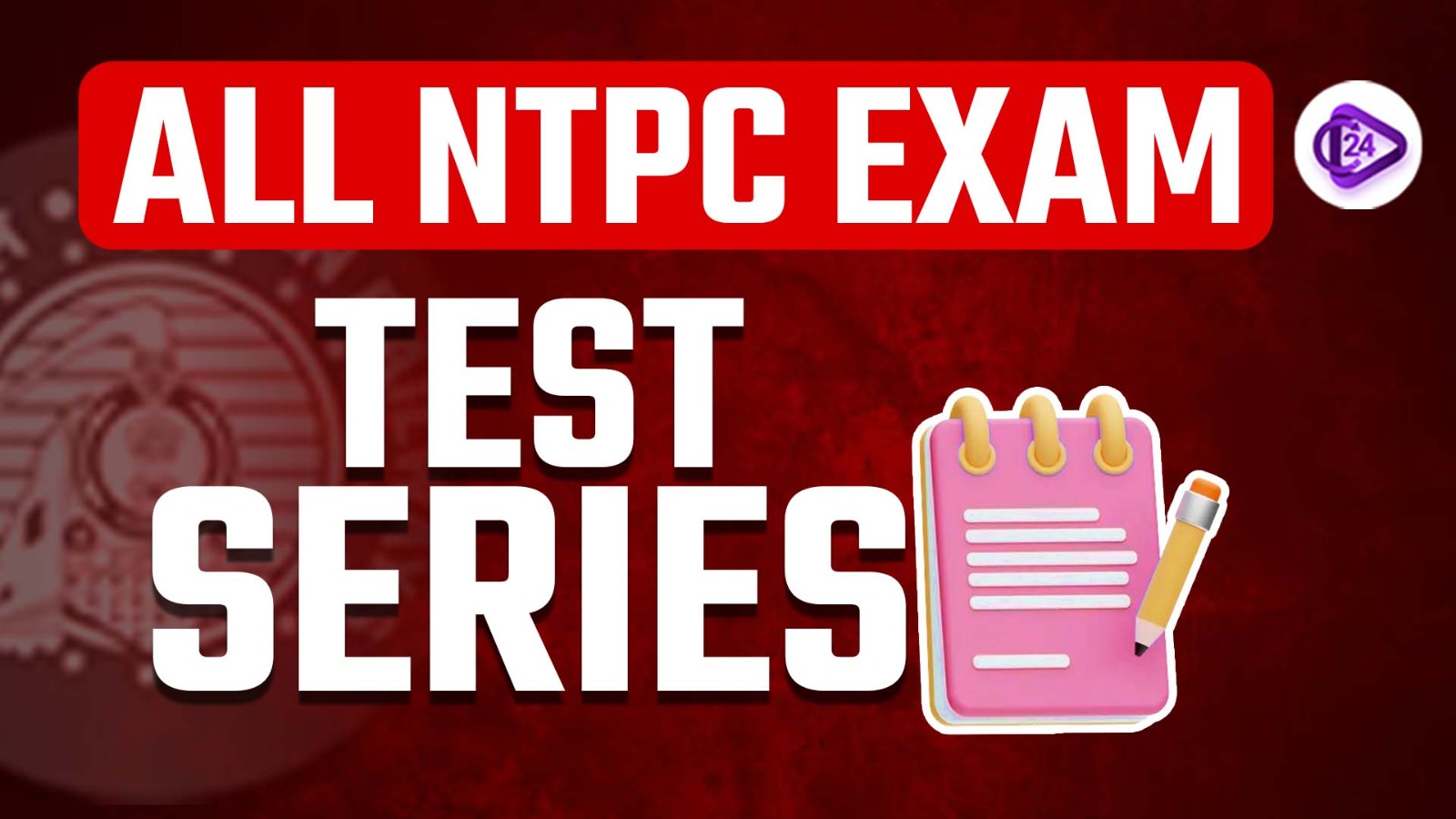RRB NTPC Syllabus 2025 serves as a critical foundation for candidates who want to succeed in the Railway Recruitment Board's Non-Technical Popular Categories (NTPC) examination. The RRB NTPC Syllabus 2025 consists of three core sections which are General Awareness, Mathematics and General Intelligence and Reasoning. Candidates must demonstrate their knowledge of global information through questions that cover history along with geography as well as the economy and general science concepts in the General Awareness section. The Mathematics part of the exam tests candidates through number systems while requiring students to solve arithmetic problems using algebra and data interpretation and geometry questions. The General Intelligence and Reasoning section tests candidates on logical reasoning, pattern recognition along with their mental aptitude capabilities.

The RRB NTPC Syllabus 2025 requires a thorough understanding from candidates to develop successful exam preparation strategies. Students who use the syllabus guide their education toward critical areas in each course better utilize their study hours. The syllabus provides essential understanding to candidates so they can complete CBT 1 as well as CBT 2 with proper preparation. The all-encompassing examination protocol enhances test success while minimizing the possibility of neglecting key subjects that could appear during the assessment.
RRB NTPC Syllabus 2025
The RRB NTPC 2025 recruitment process presents 11,558 job opportunities, which cover graduate and undergraduate positions. The RRB NTPC exam date will become accessible on the official website when the announcement is made. Multiple stages combine CBT 1 with CBT 2 as well as Typing Skill Test and Document Verification, followed by a Medical Examination to carry out the recruitment process. The recruitment system comprises various stages that examine candidate competencies as well as their compliance with post-specific standards. Candidates need to stay updated through the RRB portal regarding official dates as well as other essential information. Preparation for each stage of the exam is necessary. The RRB NTPC syllabus outlines important subjects that candidates need to study in General Awareness, Mathematics, and General Intelligence and Reasoning for preparing for their exam.The RRB NTPC 2025 examination consists of these elements according to the defined pattern and syllabus as outlined below:
RRB NTPC Syllabus 2025 Overview:
| Particulars | Details |
|---|---|
| Exam Conducting Body | Railway Recruitment Board (RRB) |
| Exam Name | Non-Technical Popular Categories (NTPC) |
| Posts | Graduate & Undergraduate Level |
| RRB NTPC Exam Dates 2025 | May-June 2025 (Tentative) |
| Vacancies | 11,558 |
| Exam Subjects | General Awareness + GK, Mathematics, General Intelligence and Reasoning |
| Mode of Exam | Online (Computer-Based Test) |
| Selection Process | CBT 1, CBT 2, CBAT/Typing Test, Document Verification |
| Questions | CBT 1: 100 Questions for 100 Marks, CBT 2: 120 Questions for 120 Marks |
| Medium/Language of Exam | 15 languages |
RRB NTPC Syllabus PDF Download
The RRB NTPC Syllabus PDF stands as a vital tool that supports candidates who want to prepare for the RRB NTPC exam. The RRB NTPC syllabus comprises three critical sections, which include General Awareness alongside Mathematics and General Intelligence and Reasoning. All three subjects serve as essential knowledge for graduate as well as undergraduate positions. Candidates who need targeted preparation should acquire the original RRB NTPC Syllabus PDF document to better understand which topics they need to study in each section. The guide enables candidates to develop proper study plans to reach full exam readiness at every stage.
RRB NTPC Syllabus 2025: CBT 1
The RRB NTPC examination syllabus is the same in CBT 1 and CBT 2; however, the pattern of examination differs, wherein the number of questions and the respective marks differ in the two phases. The total number of questions to be asked in the entire RRB NTPC CBT 1 will be 100 in total. In CBT 2, there will be 120 objective-type questions with multiple-choice answers, just like in CBT 1. Below is the comprehensive RRB NTPC CBT 1 and CBT 2 examination syllabus. CBT The questions are most likely to be of objective-type multiple-choice questions:
RRB NTPC Mathematics Syllabus 2025
| Section | Topic | Definition | |
| Simplification | BODMAS Rule | Order of operations: Brackets, Orders (powers and roots), Division, Multiplication, Addition, Subtraction. | |
| Fractions | Numbers representing parts of a whole, written as a ratio of two integers. | ||
| Approximate Value | Estimating a number to the nearest value for simplicity. | ||
| Surds & Indices | Surds: Irrational numbers expressed with roots; Indices: Powers of numbers. | ||
| Interest | Simple Interest | Interest is calculated only on the principal amount. | |
| Compound Interest | Interest is calculated on the principal and also on previously accumulated interest. | ||
| Installments | Payments made in parts over time. | ||
| Percentage | Basic Percentage Problems | Calculations involving percentage increase, decrease, or comparisons. | |
| Ratio & Proportion | Simple Ratios | Comparison of two quantities. | |
| Compound Ratio | Ratios involving more than two quantities. | ||
| Direct/Indirect Proportions | Direct: One quantity increases as another increases. Indirect: One quantity decreases as another increases. | ||
| Average | Problems on Average | Calculations involving the mean of a set of numbers. | |
| Problems on Weight/Height/Marks/Ages | Average-related problems involving different physical or academic measures. | ||
| Speed, Time & Distance | Problems with Average Speed | Average speed calculated from total distance and total time. | |
| Problems with Relative Speeds Problems on Boats, Trains, etc. |
Speed, time, and distance problems involving vehicles. |
Speed comparisons between moving objects. Speed, time, and distance problems involving vehicles. | |
| Algebra | Basic Linear Equation in One Variable | Equations involving a single variable in the form of ax + b = c. | |
| Basic Linear Equation in Two Variables | Equations involving two variables in the form of ax + by = c. | ||
| Profit & Loss | Problems with Profit/Loss | Calculations involving gains or losses from transactions. | |
| Dishonest/Successive Dealings | Problems involving fraud or multiple transactions affecting profit/loss. | ||
| Partnerships | Calculations involving profit-sharing among partners. | ||
| Number Series | Complete the Series | Identifying and continuing a sequence of numbers. | |
| Finding Missing/Wrong Term |
RRB NTPC General Intelligence & Reasoning Syllabus 2025
| Section | Topic | Definition |
| Classification | Number | Identifying the category or class to which a number belongs. |
| Letter & Meaningful Words | Sorting letters or words based on their meaning or category. | |
| GK Based Questions | General knowledge questions related to classification. | |
| Analogy | Number | Finding the common in numerical couples |
| General Knowledge | Establishing a relationship between objects of general knowledge | |
| Meaning & Letter-Based Questions | Finding relationships between letters or their meanings | |
| Series | Number & Alphabet Series | Letters or numbers to identify - patterns or correspondence |
| Coding-Decoding | Letter Shifting | Encoding by the use of switching alphabetic letters |
| Coding Letters by Words | Encoding letters based on word patterns. | |
| Coding by Analogy | Encoding letters or numbers by finding analogous patterns. | |
| Coding-Decoding Based on Numbers | Encoding or decoding numbers based on specific rules. | |
| Operations on Place Value | Encoding or decoding using place values in numbers. | |
| Coding & Decoding on Fictitious Language | Using fictional or constructed languages for encoding/decoding. | |
| Blood Relations | Family Tree Problems | Solving problems related to relationships within a family tree. |
| General Blood Relation Problems | Identifying relationships between family members based on given data. | |
| Clock & Calendar | Calendar-Based Questions | Problems related to dates, days of the week, and calendar calculations. |
| Questions on Time & Clock Hands | Calculations involving the positions of clock hands and time. | |
| Ordering & Ranking | Simple Ranking Questions | Arranging individuals or items based on ranking or order. |
| Directions & Distances | Simple Problems with Directions | Solving problems involving cardinal directions and paths. |
| Formula-Based Distance Question | Calculations based on fixed formulas related to distances and directions. | |
| Word Formation | Arranging Words in a Meaningful Order | Forming meaningful words or sentences from given letters. |
| Non-Verbal Reasoning | Complete the Pattern | Identifying and completing patterns in figures or shapes. |
| Figure-Based Analogy | Recognizing relationships between different figures. | |
| Classification | Sorting or classifying figures based on their attributes. | |
| Series | Identifying sequences in patterns or figures. | |
| Cube-Based Questions | Solving problems involving 3D figures and cube rotations. | |
| Others | Missing Number | Finding missing numbers in sequences or patterns. |
| Venn Diagram | Solving problems using Venn diagrams to show relationships between sets. | |
| Puzzle | Solving various types of puzzles involving logical reasoning. |
RRB NTPC General Awareness Syllabus 2025
| Section | Topics to Prepare |
| Current Affairs/General Awareness |
|
| General Science |
|
RRB NTPC Syllabus 2025: CBT 2
The CBT 2 Exam consists of three areas as well: general awareness, mathematics, and general intelligence and reasoning. View the CBT 2 subject-by-subject syllabus below.
1. Mathematics
The RRB NTPC Mathematics Syllabus information is available for candidates to review.
- Number System: Decimals, Fractions, LCM, HCF
- Algebra: Linear Equations, Polynomials
- Ratio and Proportion: Basic Ratios, Proportions
- Percentage: Profit/Loss, Simple/Compound Interest
- Mensuration: Areas and Volumes
- Time and Work: Efficiency, Wages
- Time and Distance: Speed, Relative Speed
- Data Interpretation: Tables, Graphs
2. General Intelligence and Reasoning
The General Intelligence & Reasoning Syllabus for RRB NTPC's CBT 2 syllabus
- Analogies: Number, Alphabetical, Word
- Series: Number and Alphabet Series
- Coding-Decoding: Letter and Number-Based
- Syllogism: Logical Conclusions
- Puzzle: Arrangement, Sequence
- Blood Relations: Family Trees
- Direction Sense: Relative Directions, Distances
- Data Sufficiency: Logical Reasoning
General Awareness
The general awareness syllabus for CBT 2 and CBT 1 differs in difficulty, but otherwise they are nearly identical. Examine the table for the General Awareness CBT 2 Syllabus.
- Current Affairs: National and International
- History: Ancient, Medieval, Modern India
- Geography: Physical, Social, Economic
- Polity: Indian Constitution, Governance
- Economics: Basics and Recent Developments
- General Science: Physics, Chemistry, Biology
- Culture: Art, Literature, Monuments
How to Cover RRB NTPC Syllabus 2025
The RRB NTPC 2025 exam requires proper preparation that involves designing a structured study plan to review the full syllabus. Students who want to succeed in the RRB NTPC exam must study the three core areas which are General Awareness together with Mathematics and General Intelligence and Reasoning. Your study system for the syllabus should follow these steps:
1. Understand the Syllabus and Exam Pattern
Students should complete an exhaustive examination of the official RRB NTPC syllabus and exam pattern. Your preparation will become more efficient by understanding the topics ahead of time for both CBT 1 and CBT 2.
Read the marking criteria along with the deduction rules to prevent typical mistakes from occurring.
2. General Awareness
Students should dedicate their effort to understanding events and historical facts related to modern times along with learning Indian geography along with economics and scientific principles.
Devote daily periods to read newspapers alongside watching television news broadcasts.
Review the critical events alongside dates and national affairs that merit attention.
3. Mathematics
You should begin with number system fundamentals along with percentage rules followed by profit margin principles and time-work calculations as well as distance-time-speed formulas.
Devote time to practice numerical aptitude problems while working on quick math skills.
Testing your comprehension with old exam papers and virtual mock tests will help you control your time better.
4. General Intelligence and Reasoning
Attempt verbal and non-verbal reasoning problems that include analogies and coding-decoding and blood relations and direction-related tasks.
Organized practice of puzzles and patterns, and series problems will build up your reasoning capability.
5. Create a Timetable
Devote predetermined times to subjects by determining how strong and weak you are in each area.
Follow a realistic study schedule, which you should monitor for constant progress assessment.
6. Mock Tests and Previous Year Papers
Subject-specific mock tests should be taken as they help students experience actual exam situations.
Your performance analysis after tests helps you identify underperforming areas so you can use those areas for improvement.
7. Stay Consistent and Positive
The effectiveness of your preparation depends on stable consistency and giving less priority to last-minute memorization.
Never miss the practice of revision because this practice keeps information stored in your mind.
Note: Following these steps along with staying disciplined will help you become well-prepared for RRB NTPC 2025 exam day. In order to succeed in the exam you must practice regularly and master your time usage.







Your email address will not be published. Required fields are marked *